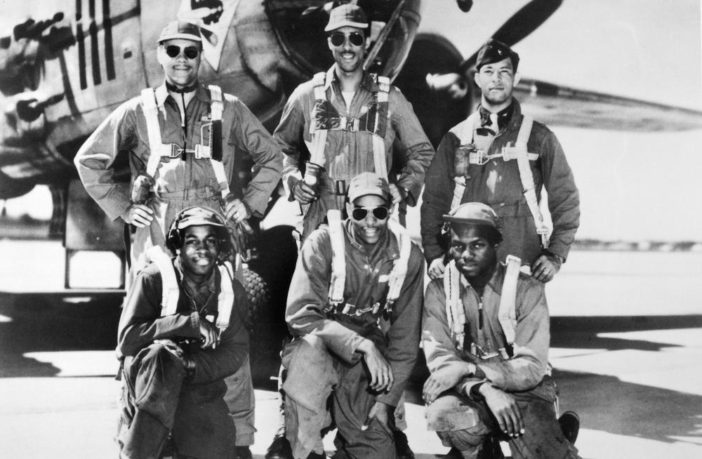By Megan Sayles,
AFRO Business Writer,
msayles@afro.com
In 1941, the Tuskegee Airmen became the first all-Black flying crew in the U.S. military during World War II. Also known as the Red Tails, the 992 fighter pilots executed more than 1,500 missions, and 15,500 forays, defeating 261 enemy aircrafts and winning more than 850 medals.
Despite their success, Leon Haynes, founding CEO of Hosanna House, felt that young people, as well as the broader public, didn’t know much about the airmen’s history today. In 2022, he opened the Center for Aviation Technology and Training (CATT) and Tuskegee Airmen Museum at the organization’s event center to expose youth to not only the history of the Red Tails, but the opportunities available to them in aviation.
“We have a cockpit fight trainer, which is our main simulator. Kids can take off, and they can land. We have wearable wings, imagination mirrors and an airport play table,” said Haynes. “A lot of our kids have never been to the airport. They’ve never been in this setting or sat in an airplane seat. All of a sudden, we’re triggering things. We have to empower our young people so they don’t get fearful of what they can do.”
The Tuskegee Airmen Museum was created through a collaboration with the Smithsonian Institution’s “Black Wings: American Dreams of Flight” exhibit through the museum’s traveling exhibition service. Both the museum and CATT received design support from the Children’s Museum of Pittsburgh.
After youth interact with the exhibit activities, they go to the classroom to participate in a curriculum surrounding the activity. The lessons involve science, technology, engineering and mathematics (STEM) education, drone technology literacy and hands-on flight training and specialized training for high school students looking to obtain careers in aviation, aerospace and aeronautics.
CATT also enables high school students to get a Federal Aviation Administration (FAA) certification to become commercial drone pilots.
Soon, the Tuskegee Airmen Museum will travel to other states, like Massachusetts, North Carolina and Alabama. Haynes said it’s booked through 2026.
“Aviation is not just traditional pilots. It’s everything from drones, mechanics, aeronautics, air traffic control and administrative roles,” said Haynes. “All of the things you learn in STEM about mass, weight and aerodynamics are transferable to [other careers.]”
Connor J. Cuttler, a resident of Wilkinsburg, Pa., got involved with CATT in 2022 while attending summer camp at Hosanna House. The 12-year-old said he jumped at the opportunity to be a part of the program, as he had an affinity for flight.
“It combined my love for aviation, as well as my passion for learning about African-American history,” said Connor. “I wanted to be a part of learning the history of the first African-American military aviators in the United States armed forces, the Tuskegee Airmen. The Tuskegee Airmen faced several adversities but persevered to become one of the elite squads that every squadron requested to escort them in battle.”
Through CATT, Connor learned about aerodynamics, how planes are built, and how military pilots wear flight suits to regulate their temperature and keep out moisture.
“STEM is on my radar, and I would love to learn more about the inner workings of the plane,” said Connor. “When I grow up I want to be an aerospace engineer to design new aircrafts and teach others what I’ve learned.”
Megan Sayles is a Report for America Corps member.



